Strong Memorial Hospital (SMH) is an 886-bed medical facility, part of the University of Rochester Medical Center complex, in Rochester, New York, United States. Opened in 1926, it is a major provider of both in-patient and out-patient medical services. Attached to Strong is the 190-bed Golisano Children's Hospital, which serves infants, children, teens, and young adults aged 0–21.

Project 4.1 was the designation for a medical study and experimentation conducted by the United States of those residents of the Marshall Islands exposed to radioactive fallout from the March 1, 1954 Castle Bravo nuclear test at Bikini Atoll, which had an unexpectedly large yield. Government and mainstream historical sources point to the study being organized on March 6 or March 7, 1954, six days after the Bravo shot.
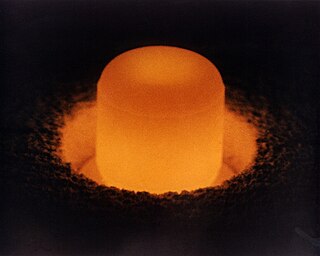
Plutonium-238 is a radioactive isotope of plutonium that has a half-life of 87.7 years.
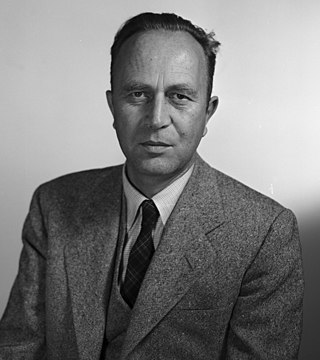
Joseph Gilbert Hamilton was an American professor of Medical Physics, Experimental Medicine, General Medicine, and Experimental Radiology as well as director (1948-1957) of the Crocker Laboratory, part of the Lawrence Berkeley National Laboratory. Hamilton studied the medical effects of exposure to radioactive isotopes, which included the use of unsuspecting human subjects.
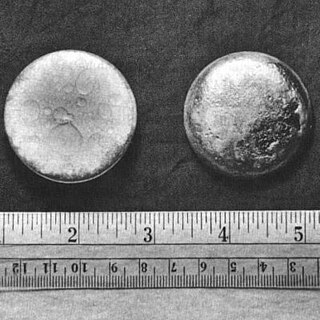
Plutonium is a chemical element; it has symbol Pu and atomic number 94. It is an actinide metal of silvery-gray appearance that tarnishes when exposed to air, and forms a dull coating when oxidized. The element normally exhibits six allotropes and four oxidation states. It reacts with carbon, halogens, nitrogen, silicon, and hydrogen. When exposed to moist air, it forms oxides and hydrides that can expand the sample up to 70% in volume, which in turn flake off as a powder that is pyrophoric. It is radioactive and can accumulate in bones, which makes the handling of plutonium dangerous.

Harold Carpenter Hodge (1904–1990) was a well-known toxicologist who published close to 300 papers and five books. He was the first president of the Society of Toxicology in 1960. He received a BS from Illinois Wesleyan University and a PhD in 1930 from the State University of Iowa, publishing his first paper in 1927. He received a number of honors and awards during his career.

Since the discovery of ionizing radiation, a number of human radiation experiments have been performed to understand the effects of ionizing radiation and radioactive contamination on the human body, specifically with the element plutonium.
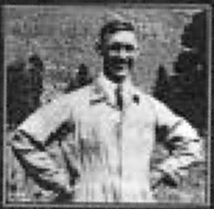
Albert Stevens (1887–1966), also known as patient CAL-1 and most radioactive human ever, was a house painter from Ohio who was subjected to an involuntary human radiation experiment and survived the highest known accumulated radiation dose in any human. On May 14, 1945, he was injected with 131 kBq of plutonium without his knowledge because it was erroneously believed that he had a terminal disease.

The Plutonium Files: America's Secret Medical Experiments in the Cold War is a 1999 book by Eileen Welsome. It is a history of United States government-engineered radiation experiments on unwitting Americans, based on the Pulitzer Prize–winning series Welsome wrote for The Albuquerque Tribune.
Eileen Welsome is an American journalist and author. She received a Pulitzer Prize for National Reporting in 1994 while a reporter for The Albuquerque Tribune for a 3-part story titled "The Plutonium Experiment" published beginning on November 15, 1993. She was awarded the prize for her articles about the government's human radiation experiments conducted on unwilling and unknowing Americans during the Cold War. Welsome also has received a George Polk Award, the Selden Ring Award for Investigative Reporting, an Investigative Reporters and Editors Gold Medal, the Heywood Broun Award, as well as awards from the National Headliners Association and the Associated Press. In 1999, Welsome wrote the book The Plutonium Files: America's Secret Medical Experiments in the Cold War. In 2000, Welsome received the PEN/Martha Albrand Award for First Nonfiction and the PEN Center USA West Award in Research Nonfiction for The Plutonium Files.
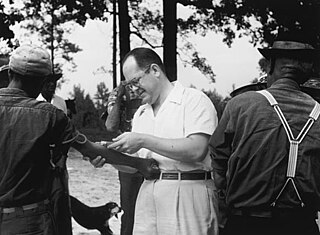
Numerous experiments which are performed on human test subjects in the United States are considered unethical, because they are performed without the knowledge or informed consent of the test subjects. Such tests have been performed throughout American history, but some of them are ongoing. The experiments include the exposure of humans to many chemical and biological weapons, human radiation experiments, injections of toxic and radioactive chemicals, surgical experiments, interrogation and torture experiments, tests which involve mind-altering substances, and a wide variety of other experiments. Many of these tests are performed on children, the sick, and mentally disabled individuals, often under the guise of "medical treatment". In many of the studies, a large portion of the subjects were poor, racial minorities, or prisoners.
Human subject research legislation in the United States can be traced to the early 20th century. Human subject research in the United States was mostly unregulated until the 20th century, as it was throughout the world, until the establishment of various governmental and professional regulations and codes of ethics. Notable – and in some cases, notorious – human subject experiments performed in the US include the Tuskegee syphilis experiment, human radiation experiments, the Milgram obedience experiment and Stanford prison experiments and Project MKULTRA. With growing public awareness of such experimentation, and the evolution of professional ethical standards, such research became regulated by various legislation, most notably, those that introduced and then empowered the institutional review boards.
A criticality accident occurred on December 30, 1958, at the Los Alamos National Laboratory in Los Alamos, New Mexico, in the United States. It is one of 60 known criticality events that have occurred globally outside the controlled conditions of a nuclear reactor or test, though it was the third such event that took place in 1958 after events on June 16 at the Y-12 Plant in Oak Ridge, Tennessee, and on October 15 at the Vinča Nuclear Institute in Vinča, Yugoslavia. The accident involved plutonium compounds dissolved in liquid chemical reagents; within 35 hours, it killed chemical operator Cecil Kelley by severe radiation poisoning.
Ebb Cade was a construction worker at Clinton Engineer Works at Oak Ridge and was the first person subjected to injection with plutonium as an experiment.

Wright Haskell Langham was an internationally renowned expert in the fields of plutonium exposure, aerospace and aviation medicine, Eniwetok nuclear tests, the Palomares and Greenland nuclear accidents. Sometimes Langham was referred to as Mr. Plutonium.
The Cincinnati Radiation Experiments were a series of total and partial body irradiation tests performed on at least 90 patients with advanced cancer at the Cincinnati General Hospital, now University of Cincinnati Hospital, from 1960 to 1971. Led by radiologist Eugene L. Saenger, the experiments were funded in part by the Defense Atomic Support Agency within the Department of Defense to study how soldiers in nuclear war would be affected by large doses of radiation. The experiments were conducted without patient consent in the first five years of the study and with disputed levels of consent thereafter. The irradiated patients experienced nausea, vomiting, cognitive impairment, and death. The contract between the researchers and the DOD terminated in 1972 under pressure from Senator Edward Kennedy, marking the end of major human irradiation experimentation in the U.S. that began after World War II and continued throughout the Cold War Era.
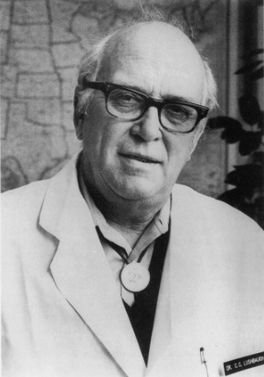
Clarence Chancelum Lushbaugh Jr. was an American physician and pathologist. He was considered an expert in radiological accidents and injuries, as well as a pioneer in radiation safety research, and he is known for his controversial research involving human subjects.

Donald Francis Mastick was an American chemist who worked at the Manhattan Project's Los Alamos Laboratory. As part of Project Alberta, he was part of the planning and preparation for the atomic bombing of Hiroshima and Nagasaki, for which he was awarded the Bronze Star Medal. He later worked for the Naval Radiological Defense Laboratory and the Atomic Energy Commission. In 1971, he founded his own interior landscape company, Foliage Plant Systems.
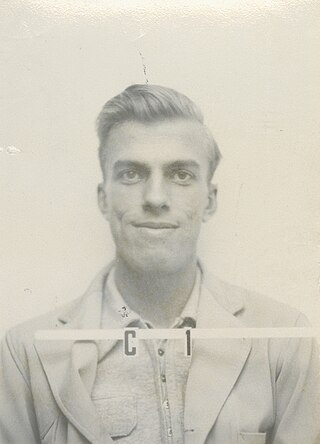
Louis Henry Hempelmann Jr, was an American physician who was the director of the Health Group at the Manhattan Project's Los Alamos Laboratory during World War II. After the war he was involved in research into radiology. A paper he published in the New England Journal of Medicine in 1949 warned of the dangers of using fluoroscopes to measure the size of children's feet.

Robert Spencer Stone was a Canadian-American physician who served as head of the Health Division of the Chicago Metallurgical Laboratory as part of the Manhattan Project. He oversaw experiments in which test subjects were injected with radioactive materials such as plutonium in order to measure their metabolism and excretion.